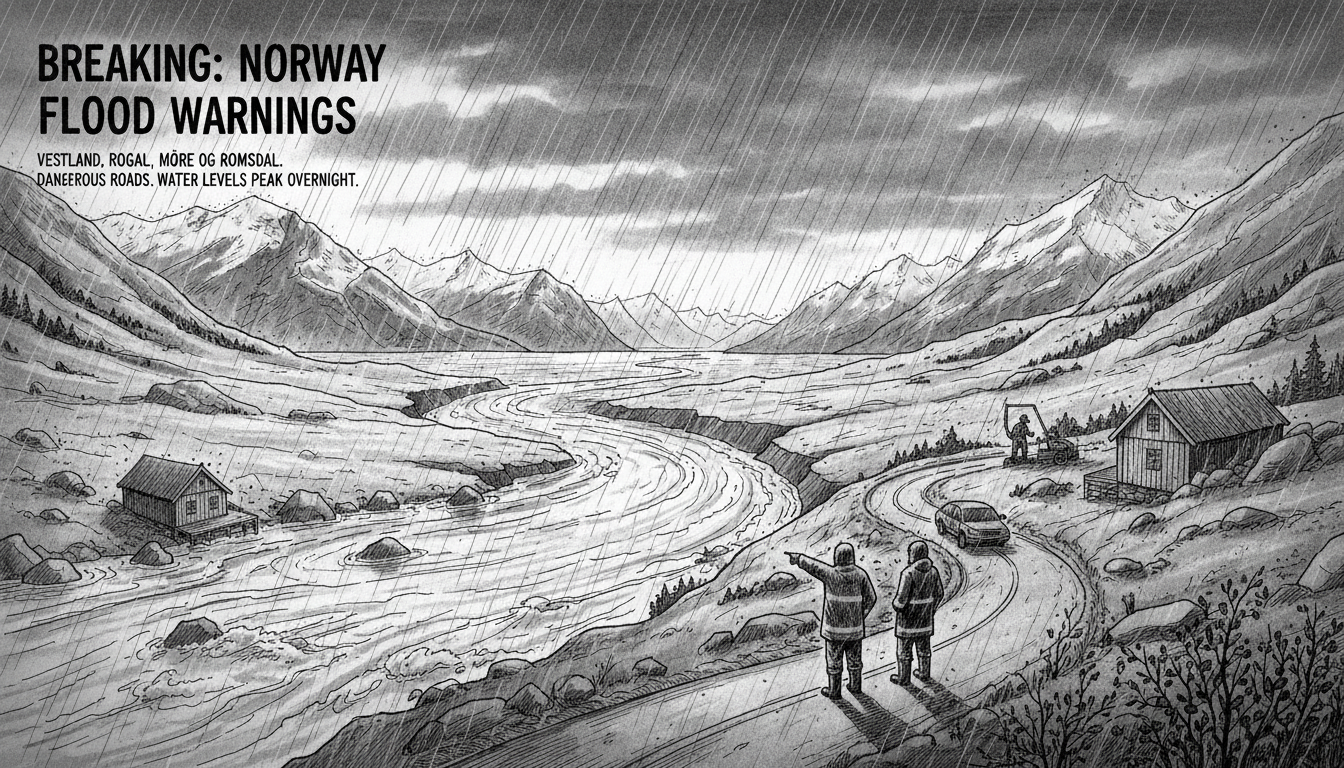Norwegian authorities have activated yellow flood alerts across three western counties. The Norwegian Water Resources and Energy Directorate warns of substantial water flow in streams and rivers. Heavy rainfall combined with snowmelt creates dangerous conditions. Most significant water levels are expected overnight into Friday morning. The Meteorological Institute also reports dangerous road icing in interior regions. These include Indre Sogn and Nordfjord areas.
This flood warning carries substantial implications for Norway's critical infrastructure. Western Norway contains essential transportation corridors and energy installations. The region hosts several hydroelectric facilities that power national industries. Flooding risks could impact electricity production during peak demand periods. Many coastal communities depend on reliable ferry connections. These services often face disruptions during severe weather events.
Norway's flood preparedness system reflects its advanced environmental monitoring capabilities. The national warning system integrates real-time data from multiple sources. Hydrological stations measure river levels and flow rates continuously. Meteorological forecasts provide precipitation and temperature projections. Emergency services maintain prepositioned resources in vulnerable regions. This integrated approach minimizes potential damage to communities and infrastructure.
Western Norway's topography makes it particularly flood-prone. Steep mountain valleys channel water rapidly toward coastal settlements. Deep fjords like Sognefjorden and Hardangerfjorden experience complex water dynamics. Many communities occupy limited flat land near shorelines. Historical flood events demonstrate the region's vulnerability to extreme weather. The 2014 flood in Lærdal caused extensive property damage and infrastructure disruption.
Climate change intensifies Norway's flood management challenges. Warmer temperatures accelerate spring snowmelt patterns. Increased atmospheric moisture leads to heavier precipitation events. Sea level rise affects coastal flooding risks in fjord communities. The government's latest climate adaptation strategy prioritizes western regions. Municipalities receive funding for protective infrastructure and emergency planning.
International readers should understand Norway's decentralized emergency response system. County governors coordinate regional crisis management. Municipalities maintain primary responsibility for local evacuation and shelter. The national government provides specialist resources when needed. This structure ensures tailored responses to local conditions and risks.
The current situation demonstrates Norway's proactive approach to natural hazards. Early warnings allow communities and businesses to prepare effectively. Transportation authorities can implement preventive measures on vulnerable roads. Energy companies can adjust hydroelectric operations to manage water flows. Residents receive practical guidance through multiple communication channels.
What practical steps should residents and visitors take during flood warnings? Monitor official information sources regularly. Secure outdoor property and move vehicles from flood-prone areas. Prepare emergency supplies for potential power outages. Follow evacuation instructions from local authorities immediately. Avoid unnecessary travel during severe weather conditions.

